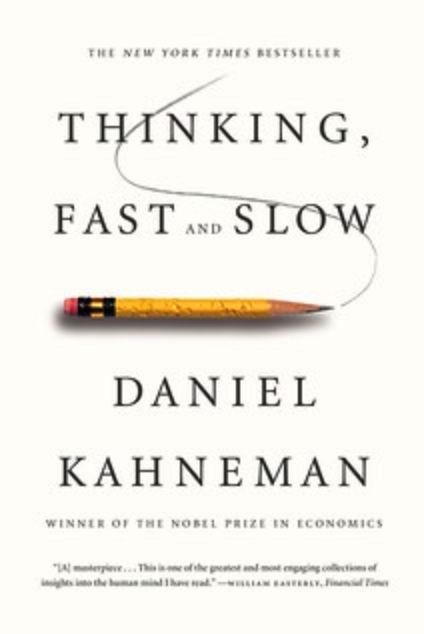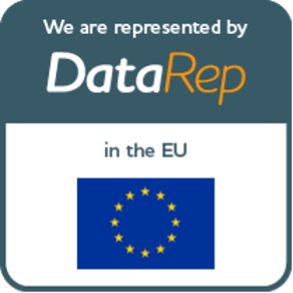What is behavioural economics?
Behavioural economics is a method of analysis that uses psychological insights into human behaviour to explain how people make economic choices.
Central to behavioural economics is the recognition that our conscious and subconscious thinking impacts economic decision-making in ways that can appear irrational from the perspective of classical economics.
Why is behavioural economics so important?
This quote, from McKinsey, sums it up:
Marketers have long been aware that irrationality helps shape consumer behaviour. Behavioural economics can make that irrationality more predictable. Understanding exactly how small changes to the details of an offer can influence the way people react to it is crucial to unlocking significant value—often at very low cost.
In many ways, this relatively new academic discipline (it first came to the fore in the 1990’s) reflects what qualitative research has always sought to do: identify the relevant thoughts, needs, attitudes, motivations, expectations, beliefs and preferences of the target audience, as well as any actions or behaviours that these may give rise to.
Where it adds to research is in its identification and analysis of certain key behaviours and cognitive processes, generating insights that are extremely useful.
Examples of behavioural economics concepts
System 1 and System 2 thinking
This is a major strand of behavioural economics, although it actually goes wider and describes how we take decisions in all aspects of life.
All of us use both types of thinking and there’s frequent crossover between the two.
System 1 thinking operates at an unconscious, automatic level. It needs to: our lives are far too complex to apply logical, conscious thought to every one of our actions. Most of our thinking is actually done on a System 1 basis, and in general it serves us well.
For example, when driving a car, much of our thinking is automatic. We don’t actively think about how much to turn the steering wheel or when to brake as that would take far too long. That doesn’t mean we aren’t thinking while driving, though – we are using System 1.
System 2 thinking is conscious, considered and logical, although it is influenced by experiences, biases and other subjective factors governed by System 1.
Therefore, it’s perfectly possible for different people to apply System 2 thinking to the same problem and come up with different answers.
For businesses, having an understanding of whether customers are choosing or avoiding their products as a result of System 1 or 2 thinking can have a significant effect on rates of customer acquisition and retention.
Generally, low value, frequent purchases – such as groceries – are decided on a System 1 basis. We may use some System 2 thinking to decide what products and brands we are going to select at some point, but thereafter we just tend to stick to the same choices – it just isn’t worth our time and effort to expend more conscious thought on them.
This is the challenge facing marketers of many everyday products: how do we engage System 1 thinking to invoke a decision to switch to our brand? A snappy slogan or jingle that sticks in the subconscious helps – I defy anyone not to have ‘Beanz Meanz Heinz’ lodged somewhere in their brain!

When consumers make occasional, high-value purchases such as buying a car, System 2 comes into play. We pay much more attention to the features on offer and what alternatives are available. But, even after logically assessing what features a car must have to satisfy our requirements, our final decision of make and model is usually moulded by subjective, less rational, System 1 thinking.
Manufacturers of cars and other expensive items often pack them with features to stand up to System 2 scrutiny, but their marketing is typically aimed at achieving an emotional, System 1 response. Apple have hit the bullseye in this regard with the iPhone, where millions of devotees would not even contemplate alternative brands – their phones have become almost an essential aspect of their personality.
Social proof
A powerful motivation for many buying decisions is what other people are doing. Word of mouth endorsements have always been considered the most valuable sales leads, but marketing campaigns can tap into the social proof effect. One iteration of the ‘Beanz Meanz Heinz’ theme was the jingle:
A million housewives every day pick up a tin of beans and say ‘Beanz Meanz Heinz’.
The consumer might not know any of those million housewives personally, but that’s a lot of people who have apparently decided there’s no other brand of beans for them!
These days, the power of social proof has been amplified massively by social media. Who hasn’t checked Trip Advisor or Amazon to see what others have to say before making a purchase? It is also at the heart of why influencers have become so important, so quickly.
Loss aversion
Where classical economics would assume that investors view a £1,000 gain and a £1,000 loss as correspondingly good and bad, behavioural economics finds that a loss typically weighs more on an individual’s thinking than a gain. Two leading behavioural economists, Kahneman and Tversky, even managed to put a figure on the relationship, their research showing that the average median coefficient of loss aversion is about 2.25. In other words, losses count for 2.25 times more than the equivalent gains.

Aversion to loss includes the fear of missing out, which is targeted by sellers who set time limits on offers, or warnings that only a limited number of a product remain available. It also helps to explain the use of default options to steer consumer behaviour – they imply the ‘correct’ option, so consumers are less likely to risk defecting away from them.
Anchoring
The first piece of information consumers receive about a product or service is crucial to their decision-making. It is used as a reference and benchmark from then on, whether logical or not.
This was demonstrated in an experiment by the behavioural economists Dan Ariely, George Loewenstein and Drazan Prelec, when they asked MIT students to consider six products.
The average price of each product was seventy dollars, but the students weren’t given this information. Instead, they were asked if they would be prepared to pay an amount in dollars equal to the last two digits of their social security numbers. Students whose numbers were higher were prepared to pay more than those who had lower numbers, although common sense would suggest there should be no connection.
Anchoring is used extensively in marketing. Deals which show an original price of £500 but a discounted one of £125 are very persuasive. The ‘anchor’ of the £500 price-tag implies the product’s true value, even if cold logic suggests the discounted price is probably nearer the mark.
Framing
Concepts like loss aversion and anchoring are subsidiary to the broader one of framing, which looks at how the context in which consumers make decisions directly impacts those decisions. Even a person’s native language contributes to context, as is persuasively argued in this fascinating TED talk.
The way marketers use messaging to frame choices and set context directly affects consumers’ decisions.Saying ‘8/10 cats prefer this brand’ is logically the same as ‘2/10 cats prefer another’ but only the former cuts it as a marketing slogan! Context is often physical, too; where products are actually placed on supermarket shelves will impact their sales dramatically.
One specific piece of context-setting is known as the ‘decoy effect’ or, more technically, as ‘asymmetrically dominated choice’. It arises when a consumer’s preference for one option over a second changes as a result of adding a third option.
Dan Ariely described how The Economist used a decoy effect to increase its revenue. A digital subscription was offered at $59, a print version at $125 and a third option combining the two also at $125. The Economist never really expected any custom for the print-only version – why would anyone decline to take the online subscription at no additional cost? But they knew that the mere presence of the decoy, print-only offer would make people lean towards the combined subscription rather than the digital-only one.
Behavioural economics is useful
Marketers can and do use the lessons of behavioural economics to influence consumer choices, create brand value and increase profits.
As well as the tactical examples cited, behavioural economics can help with more strategic aspects of marketing. For example, a segmentation model which is able to accurately takes account of consumer attitudes, prejudices and emotional similarities is likely to be far more impactful than one based demographic demographic criteria alone. And, when the psychological basis for these similarities is more accurately understood, even more authentic buyer personas can be created.
We can use behavioural economics in very subtle ways to nudge consumers in our preferred direction (remember the McKinsey quote: small changes to the details of an offer can influence the way people react to it). Indeed, ‘nudge theory’ has become an important driver of many campaigns, including efforts by the Government to steer the public’s behaviour during the COVID pandemic.
For example, ‘Eat out to help out’ reinforced the financial incentive available with an appeal to social conscience: eating out became a virtuous thing to do.
But it can also be abused
Critics of behavioural economics have objected to what they perceive as ‘dark arts’ and complain of ‘social manipulation’. Where exploiting knowledge of consumer behaviour goes too far, lawmakers will move to protect consumers from detriment. Hence there are restrictions on how price discounts can be presented and requirements for opt-ins rather than opt-outs where personal data – always valuable to marketers – is being sought.
‘Manipulation’ can work to society’s benefit, though. The opportunity to impulse-buy sweets at supermarket checkouts can be removed, giving customers a small nudge towards more healthy diets.
Organ donation schemes can operate by requiring dissenters to opt out rather than relying on a minority to opt in.
Behavioural economics and market research
I began by noting the similar aims of behavioural economics and qualitative research. Knowledge of the former is invaluable to practitioners of the latter. For example, we need to be mindful that the responses we obtain are affected by how we frame our questions. Our own biases and preconceptions can skew our approach if we aren’t careful.
Qualitative researchers also need to be aware that when respondents are asked a question in a research context, their natural inclination is to give it conscious (i.e. System 2) consideration. In reality, however, the corresponding situation would may well have been dealt with at a subconscious, System 1 level.
In sum, what behavioural economics clearly reminds market researchers is that that what respondents tell them will often be at odds with what they would actually think or do in reality.
As a result, have had to develop specific techniques to tap into the System 1 brain in order to understand how respondents think and react subconsciously.
Contact us
Brandspeak uses insights provided by behavioural economics to inform its research, which helps you get to the heart of how people interact with your brand. To find out more, call us on +44 (0)203 858 0052 or email us at enquiries@brandspeak.co.uk
References and further reading
McKinsey & Company: A Marketers Guide to Behavioral Economics
Creative Review: Beanz Meanz Heinz
MIT paper by Ariely, Loewenstein and Prelec: Arbitrarily Coherent Preferences
Ariely: Predictably Irrational: The Hidden Forces that Shape Our Decisions
Kahneman:: Thinking Fast and Slow
Thaler & Sunstein: Nudge: Improving Decisions About Health, Wealth and Happiness














